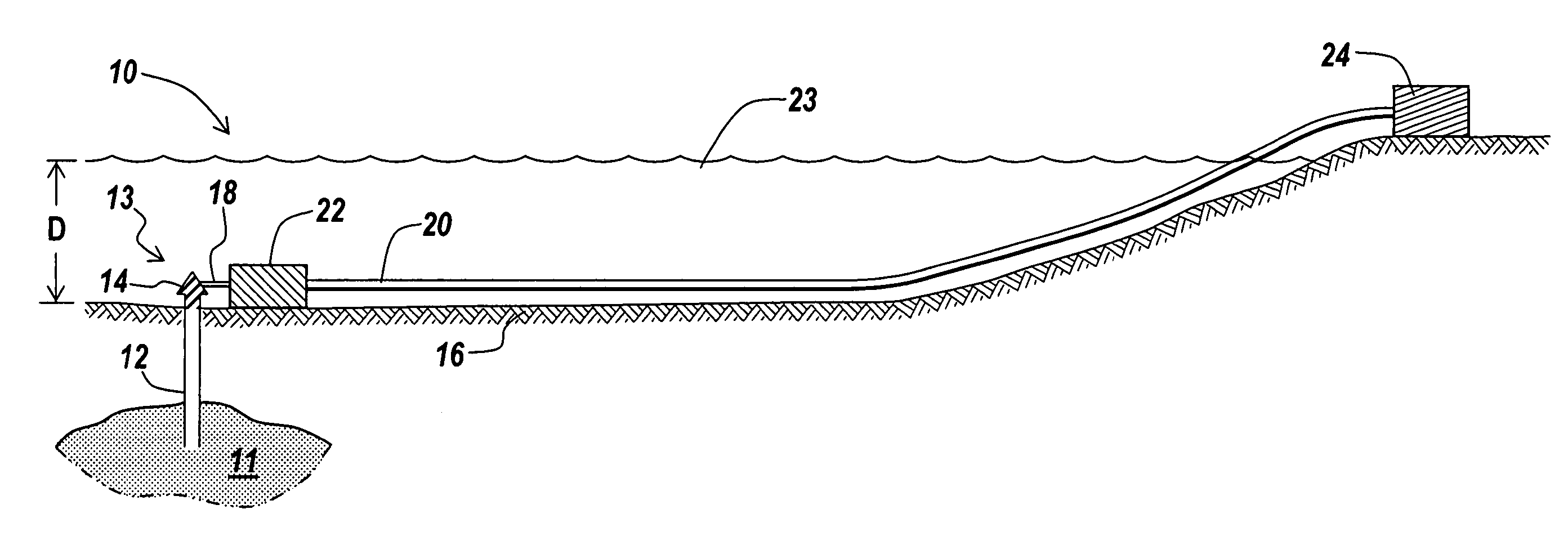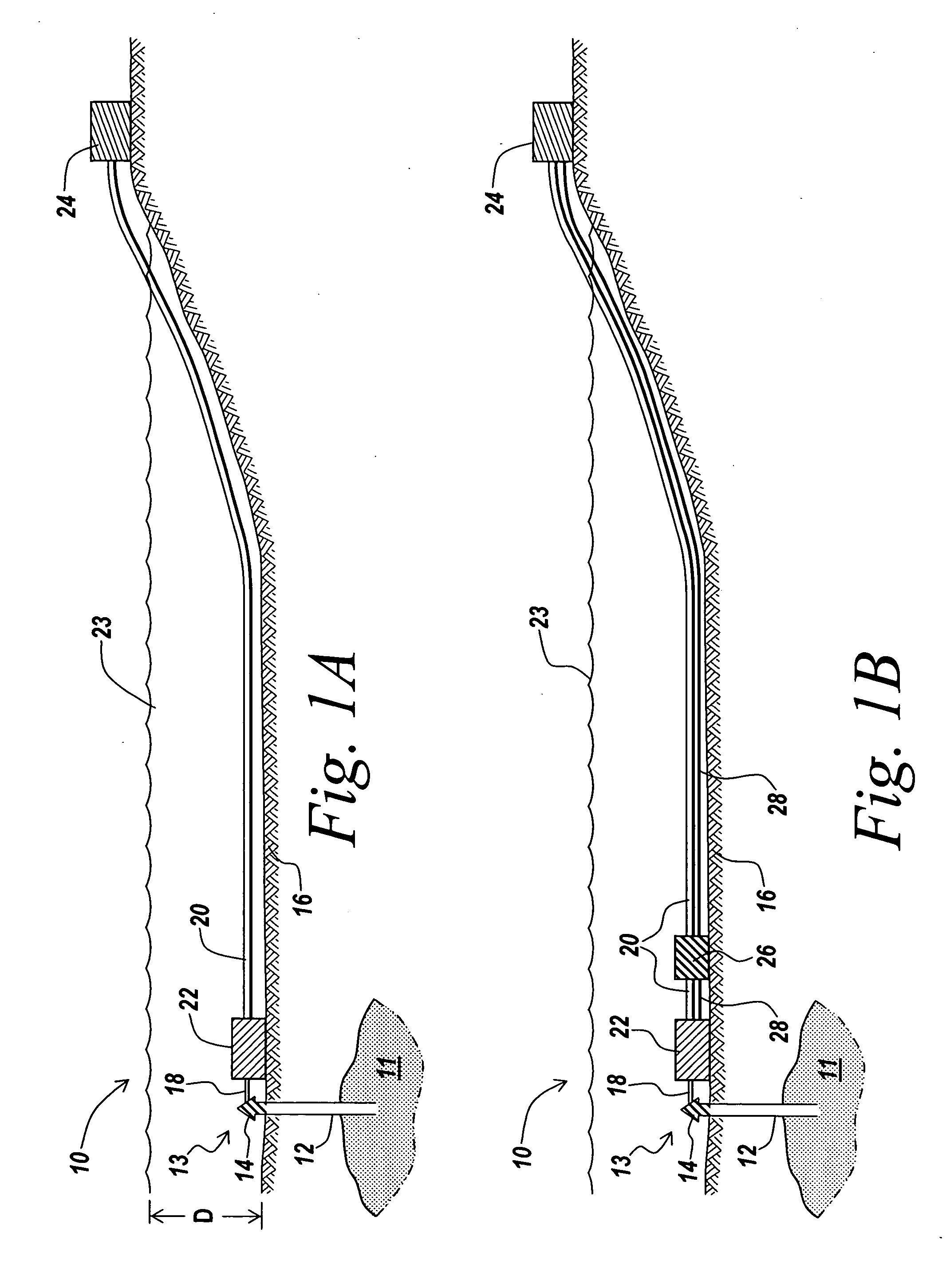Undersea well product transport
a technology for product transportation and sub-sea wells, applied in the direction of sealing/packing, wellbore/well accessories, insulation, etc., can solve the problems of large cost of large surface facilities for processing warm production, inability to maintain wellhead production temperature without accruing expensive pipeline heating and/or insulation costs, and inability to meet the needs of large-scale production, etc., to achieve short period of time, reduce the size and expense, and reduce the size of such equipmen
- Summary
- Abstract
- Description
- Claims
- Application Information
AI Technical Summary
Benefits of technology
Problems solved by technology
Method used
Image
Examples
Embodiment Construction
[0038] An illustrative embodiment of the present invention relates to an apparatus for the undersea capture and transport of hydrocarbon well product (i.e., oil, gas, and the like) in a cost effective and efficient manner. In practice, hot production from a sub-sea well passes at an optimum pressure and flow rate into a non-plugging cold flow generator. This enables a cooled stable mass of the produced material in a dispersed mixture (typically with the oil acting as the carrier) exiting the cold flow generator to move slowly at optimum pressures through very long submerged pipe lines upward across the shallowing sea bottom to a shore based, and thereby more cost efficient, processing facility. At the shore based, or near-shore based processing facility, the cold dispersed mixture is processed into valuable products primarily crude oil, and its useful derivatives. The apparatus of the present invention eliminates the need for, or reduces the size of, many expensive, trauma prone flo...
PUM
| Property | Measurement | Unit |
|---|---|---|
| temperature | aaaaa | aaaaa |
| pressure | aaaaa | aaaaa |
| velocity | aaaaa | aaaaa |
Abstract
Description
Claims
Application Information
 Login to View More
Login to View More - R&D
- Intellectual Property
- Life Sciences
- Materials
- Tech Scout
- Unparalleled Data Quality
- Higher Quality Content
- 60% Fewer Hallucinations
Browse by: Latest US Patents, China's latest patents, Technical Efficacy Thesaurus, Application Domain, Technology Topic, Popular Technical Reports.
© 2025 PatSnap. All rights reserved.Legal|Privacy policy|Modern Slavery Act Transparency Statement|Sitemap|About US| Contact US: help@patsnap.com



